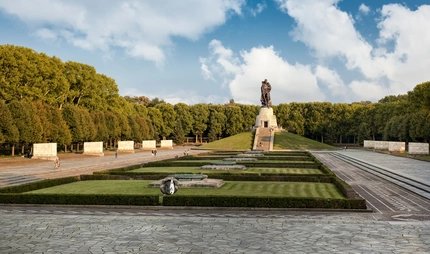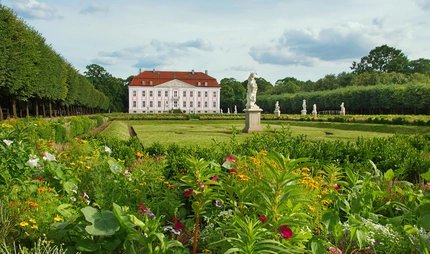
Museum Berlin-Karlshorst
Memory, meeting and communication:
A visit to the Museum in the Karlshorst district takes you to an important historic site; the place where, on May 9th 1945, high ranking officials of the Third Reich signed their unconditional surrender. The museum explores the Second World War and its consequences from the perspective of both countries. It also looks at relations between Germany and Russia from 1917 through to the 1990s. See 1,000 square metres of exhibition space filled with a selection of militaria, propaganda and everyday objects which brings the lives of soldiers and civilians on each side vividly to life.
The end of World War II in Berlin's armed forces headquarters
In 1945, the officers' mess at the former spy training school of the German armed forces is the location of a historic event. On the evening of May 8th, representatives of the Third Reich and the Russian Red Army meet, and the Germans sign the unconditional surrender. Europe and the world breathes a sigh of relief. Between 1967 and 1994, the building hosts East Germany's "Great Patriotic War" museum. May 19th 1995, on the 50th anniversary of the end of war, the "German-Russian Museum" finally opens its doors.
The first thing you see when entering the museum's grounds is a Soviet T34 tank. Inside, the displays tell the story of the Nazi regime's attempts to exterminate the USSR, and you can learn about the occupation from both Soviet and German perspectives. The extensive photo archive and Soviet propaganda maps will transport you back to the 1940s, focusing on the everyday lives of Soviet prisoners of war. Items from the battlefront bring the experience to life: weapons, mines, uniforms and military medical objects. The museum is designed to shock, with details of the death and planned starvation of millions of Soviets. The tour highlight is the magnificent dining room in the officers' mess where the surrender was signed. Newsreel footage shows the events in the spot where it happened.
Highlights of your visit
- Soviet T34 tank outside the museum.
- Exhibits about everyday life on both sides and objects from the front.
- Collection of mail, wartime and post-war photographs.
- Collection of Soviet propaganda photographs.
- Magnificent officers' mess.
See more history in East Berlin
The Museum is 30 minutes' walk from the Schloss Friedrichsfelde inside the Tierpark Berlin, near the zoo. The castle is a museum, hosting cultural events and concerts. Rummelsburg is the site of a former prison and forced labour camp from the 1870s to GDR times. The open air exhibition showcases the fate of people detained there. In neighbouring Treptow, visit the Soviet memorial and soldier's cemetery with over 7,000 war graves. Two large granite statues of soldiers guard the entrance to the park, with another soldier and child on a broken swastika in the centre. You can find out more about the Nazi regime at the Dokumentationszentrum NS-Zwangsarbeit in Treptow, the only surviving forced labour camp where you can visit one of the original barracks.
Tips for your visit
The easiest way to the Museum is with S-Bahn line S3 to Karlshorst station, then take bus 296 to the stop outside the officers' mess, or take U5 from Alexanderplatz to Tierpark, and the same bus. There are free guided tours every Sunday at 3pm. On weekdays, join a 90-minute guided tour around the museum's exteriors. Museumspass holders get free admission.
Information for school groups
Visits outside normal opening hours for school groups can be organised in advance. Book visits by completing the form on the website.
The end of world war II in Berlin
Opening hours
| Tuesday | |
|---|---|
| Wednesday | |
| Thursday | |
| Friday | |
| Saturday | |
| Sunday |



